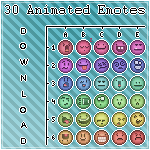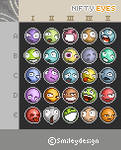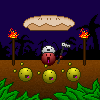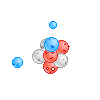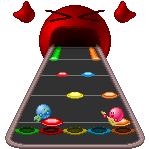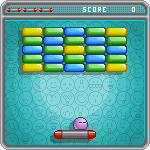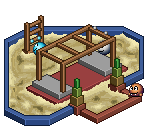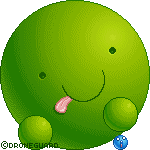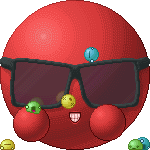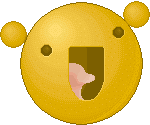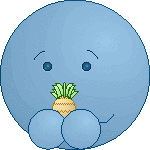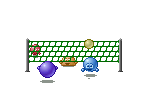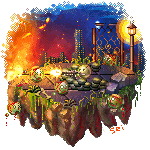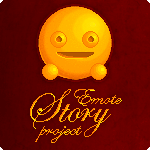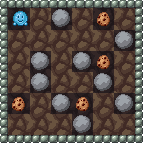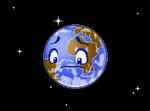Intro
As you wander around deviantART pages, there is noticeably one art medium that invades almost every element of the site. Whether it is the deviantART galleries, journals, news section, comments, forums, chatrooms, avatars or even dA profiles, it is hard to find a spot that hasn't been infiltrated by a familiar set of small, coloured, pixel circles. The art form I am talking about is of course the emoticon and throughout the past 10 or so years they have been happily adopted by deviantART and its community.
Although emoticons can often be spotted on a wide range of other instant messengers (IMs) and social media sites, deviantART has come to house a unique branch of these miniature art pieces. Whilst the majority of these alternative sites opt for simple, predominately yellow emotes with a range of basic expressions, the art community here at dA have stretched the art form far beyond its natural boundaries and developed entirely new styles of emoticons.
Emoticons on deviantART
Whilst the first emoticon is credited to have been made by Scott Fahlman in 1982, emoticons first appeared on deviantART around 2002. Since these early days emoticonists have strived to try new styles, features and animation effects which has resulted in an art form that is continuously developing. Each new generation of artists are given the opportunity to adapt and introduce concepts to the art form which has resulted in a unique community and an amazing selection of emoticons unlike any other on the internet.
To those outside the community it may seem like little has changed. We still use the same emoticon size and you don't have to look far to find a new take on the basic set of emoticon expressions. However, as you dive more into the art for you can explore some of the interesting developments that have occurred over the past decade.
In this news article I have put together a range of emoticon examples in a time line to highlight some of the developments from the past few years and shine a light on some of the amazing emoticon pieces that dA has to offer.
In the beginning ...
To fully appreciate how far this art form has come, it is best to look back at some of the emoticons posted to deviantART 10 years ago. Below is a selection of emotes from around 2002, of which some may be familiar as they still grace the Emoticon Legend today.
As you can see by the varying sizes and shape of emotes, there was not quite the same standardisation which you can now find in the gallery. The shading styles are also very minimal and it's common to find a black border around each emoticon. It is also not uncommon to make an emoticon simply by shrinking down a larger image, resulting in slightly blurry icons.
The animation is often very simple. Whilst short animations loop for continuous action, longer animations often 'reset' themselves to the emote's original positions by completely leaving the side of the canvas and re-entering at the start of the next loop.
Finding their feet hands
Around 2004 there was a large burst of activity in the deviantART emote community as the art form became more and more popular, and emotes became more accessible around the site.
Over the 2 year gap there had been a few developments in the world of emotes. The 15 pixel circle became a more dominant size and shape and the shading became a little more contrasting and noticeable. The animations were also becoming more advanced and a wider variety of expressions were being condensed down into 177 pixels.
One of the biggest changes was the introduction of round hands. Whilst circular hands did appear in dA emotes prior to 2004, they started to become more prominent as actions they were expressing advanced and large detailed hands were not always appropriate or easy to manipulate.
Colour me happy
2005 saw a new generation of emoticonists coming into the community as many of the older ones started to retire. With fresh blood came fresh ideas and some new developments started to spread through the art form.
The most noticeable change from this time period is the border colour for each emote. Whereas previously the majority of emotes had black or dark borders, the new generation of emotes generally used coloured borders to match the emote's main colour. This helped to make the borders look more natural, both against the emote and the deviation background.
Project yourself
The next large development within emoticons came in 2006 with the introduction of projects.
Projects are large, free to join collaborations between emoticonists. They come in a variety of shapes, sizes and formats with some providing you a set base to personalise, others giving a themed background to be filled. The introduction of projects helped inspire a wide variety of art and offer a stepping stone for new deviants to enter the emote community.
Eye can see you
This year saw the introduction of a new sub-genre of emotes - Tards.
When Tards were first introduced they took emotes back to their origins and focussed on creating image forms of emotes that could be made using letters, numbers and symbols such as >:C :3 and :U. This sparked off a new eye style consisting of a single pixel and opened the doors for further creativity and flexibility in the expressions displayed.
Lets get personal
Along with the introduction of different shading styles and projects, the new generation of emoticonists brought a third entirely new concept to the emote community with the addition of personalised emote characters.
Previously the majority of emoticons had used generic emotes, but around 2005/2006 it started to become common for emoticonists to develop a emoticon version to represent themselves around the community. OCs (Original Characters) also known as ECs (Emoticon Characters) are now common practice for emoticonists.
Shine, Emote Shine
After the introduction of so many new concepts, the next year was much calmer. The emote community continued to progress producing a wide variety of emoticons.
There were a couple of noticeable new features. From time to time new shading styles or eye designs made an appearance. Whilst not adopted by the whole community, it did diversify the way emotes were coloured and encourage additional more radical styles and individuality.
Opus makes a scene
Up until 2007 the majority of emotes fell into 2 categories. The first set were 'chat friendly emotes' confined to small transparent backgrounds for use within conversation. The other being project entries which varied in shape and style. However, with the creation EmoticonOpus group the art form once again broke out of its boundaries and a new category was born.
At the time the Opus hosted weekly themed contests. As the themes became more complex and emoticonists strived to out-do each other, more and more emoticonists opted to use larger canvas sizes and create miniature emoticon scenes. At this point emoticons broke away from their initial purpose of adding emotion icons into conversations and branched off into a style now known as 'visual purpose'.
Up, Up and Away
The emote community continued to embrace all of these new branches of emoticons and strive to test the limits of what the art form was capable of.
Over the next couple of years the community saw a hive of activity with a selection of big name emoticonists producing advanced animations every month. Whilst no new 'breakthroughs' occurred in this time period, the complexity and quality of emoticons continued to improve and the art form started to gain additional interest and acknowledgement as large pieces caught the eye of the wider deviantART community.
BIG changes
The summer of 2009 had a big impact on the emote community as large emoticons appeared on the scene.
Up until this point the majority of emoticonists had adopted a 15x15 base as their norm. Whilst there was no restriction on using alternative sizes, it was fairly uncommon for emoticonists to stray from these dimensions or produce emotes on a larger scale. However, in 2009 Droneguard popularised the idea of supersizing emoticons and it didn't take long for the community to follow suit.
The use of much larger bases allowed emotes to be manipulated and arranged in entirely new ways and inspired a new range of ideas and concepts. It also offered more freedom for an emoticonist as expressions no longer had to be confined to just a handful of pixels, whilst also offering a new challenge of shading a much larger area.
It didn't take long for the emote community to adopt this additional style, and whilst not as common as when they were first introduced, on occasions you can still spot one or two of these amazing emoticons pop up in the gallery.
A whole new dimension
By this point in time the art form had expanded in so many directions that it was hard to predict what might happen next. However, one place that emoticon knowledge has expanded is the use of 3D.
Whilst not the first emoticon to experiment with 3D elements, the emoticon above is a prime example showing just how far the art form has come. The ability to blend the complex turning animation with advanced emote movement just goes to show that the sky is the limit and we are likely to see emotes continue to advance over years to come.
Harder, Better, Faster, Stronger
After the introduction of numerous new techniques, the last couple of years have seen less revolutionary concepts. However, that hasn't meant that the community is at a standstill - quite the opposite. Emoticonists have continued to push the boundaries of the art form, creating emotes with more detailed backgrounds, more complex animations and higher number of frames. At the same time they are continuing to experiment with new styles and programs to give a whole new slant on the classic emoticon.
Meanwhile, the community hasn't forgotten its roots. Over the course of each week the emote gallery sees dozens of new chat friendly emoticons submitted to its pages. Even after a decade of continuous developments in shading techniques, facial expressions and animation styles, the end result isn't all that different from those first few emoticons all those years ago, and are still just as loved by the community today.
Where next?
With an art form that is so open to new concepts it is not easy to predict what the future may hold for emoticons. Whilst at one point in time all emoticonists were focussed on progressing in a single style of emoticons, the community has opened up a wealth of new areas to explore making it hard to pinpoint where the next revolutionary change may occur.
However, one thing is certain. The emote community will continue to push this art form forward and I just hope that wherever it ends up in another 10 years time, its origins are not forgotten and it continues to gain more and more respect from the wider art community.






